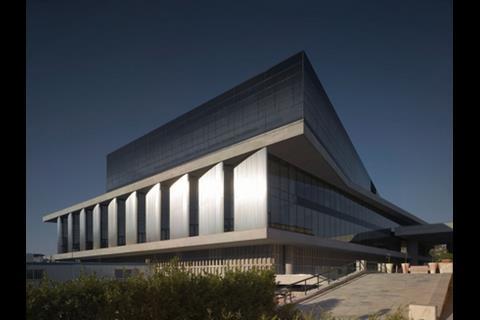This is the New Acropolis museum, and it’s located a two-minute stroll from the most famous building in the world. So how did the architect handle that brief?
Bernard Tschumi’s long-awaited New Acropolis Museum is to open this month in Athens. The €130m (£113m) building was first mooted as long ago as 1976, when the first of four competitions was held. In 2000, Bernard Tschumi, a deconstructivist French architect known principally for his Parc de la Villette in Paris, won the fourth, and final brief.
The building was originally intended to be finished in time for the 2004 Olympics, but costs, conservation issues and legal challenges meant that construction took far longer than anticipated. At last the museum will be unveiled to the public on 21 June.
In a reference to Frank Gehry’s Guggenheim, Tschumi has designed what he calls an “anti-Bilbao”: a museum more dedicated to its exhibits than to itself. Even so, the 210,000ft2 structure has, predictably, provoked a clash between neo-classicists and modernists similar to that surrounding the development of Chelsea Barracks.
A group calling itself
Acropolis Now has accused the government of architectural vandalism by putting such a modern building only 280m from the Parthenon. Tschumi has said in the building’s defence: “I’m not interested in imitating the Parthenon. I’m interested in achieving that level of perfection in my buildings, and for early 21st-century architecture to match it in its own way.”
His solution is a three-storey, light-filled box made of glass, marble and concrete. The ground floor is suspended on concrete pillars above excavations of the ancient region of Makriyianni, while the middle floor is a trapezoidal double-height space, decked out in marble, that holds artefacts from the archaic period to the Roman Empire.
Tschumi’s pièce de resistance, and the element of the building likely to create the most controversy in the UK, is a rectangular Parthenon Enclosure complete with a glass box ready to contain the Elgin Marbles – the collection of marble metopes that once adorned the Parthenon. The artefacts were obtained by the British government in the 19th century and are still the subject of dispute between the Greek and UK authorities. The box will remain empty until the British government is persuaded to return the marbles from their current home in the British Museum.
Although the building is clearly in the modernist tradition, it has a simplicity and grace that pays homage to its classical surroundings. For example, the structural concrete columns, while hardly in the doric order, pay reference to the remains of the Parthenon just a few minutes walk away. Tschumi has been careful to use as much of the natural light as possible so that the statues and relics can be enjoyed as they might have been back in the heyday of Ancient Greece. Hopefully, the beauty and restraint of the completed building will silence some of Tschumi’s critics.
Project team
Architect Bernard Tschumi Architects
Local architect Michael Photiadis
Structural engineer Arup, New York
Lighting engineer Arup, London
Electrical engineer Michaniki Geostatiki
Consultant Hugh Dutton Associés
Postscript
Photographs by Christian Richter































2 Readers' comments